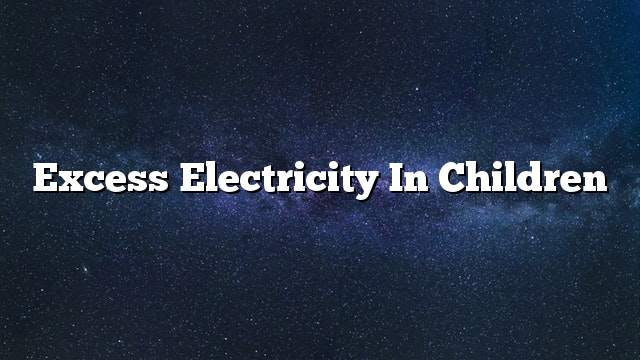Excess electricity in children
The condition of excess electricity in children was known as epilepsy, but it was called excess electricity to avoid the use of epilepsy. It is scientifically interpreted as a disorder of regularity in the electrical brain secretions. It is also explained as a neurological condition to which the child is exposed due to temporary disturbance in the electrical cycle. The brain, which causes frequent muscle spasms in the child, also known as convulsions, in addition to loss of consciousness and fainting in severe cases, and excessive electricity several types and usually children are more susceptible to infection known as epilepsy Small, where the child loses consciousness for a short time and then regain consciousness quickly.
Causes of excess electricity in children
The excess electricity occurs in children if the neuron is working improperly, and where the neurons are connected to each other by clamps, which allow the passage of electrical signals between them. The excess electrical pulse occurs when the activity of the electrical brain is disrupted, where there is a synchronized activity characterized by frequency For three waves per second, and the reasons that lead to it are:
- Launching the brain for an excessive amount of electrical charge, which leads to severe muscle spasms.
- Child injury in some cases, including cerebral anomalies and other neurological diseases, brain tumors and genetic diseases.
- Exposure to a strong direct injury to the head.
- Lack of oxygen reaching the brain at birth.
- Lead poisoning or meningitis.
Symptoms of excess electricity in children
- Difficulties in learning with difficulty in speech, with unconscious cases of boredom.
- Audio and visual deviations.
- Trembling and contraction in organs and limbs, with some movements without any purpose.
- Problems with smell, taste and digestive system.
- Feeling upset, anxious, tense, and losing touch with reality.
- Full fainting and relaxation in the muscles.
- Increase in secretion of saliva, in addition to vomiting and confusion when awake.
- Excessive stool or urine.
- Hyperactive activity, and body temperature disorders.
Treatment of excess electricity in children
- Drug therapy: Drug therapy is usually the first solution used by doctors to treat excess electricity. These drugs control the disease, while maintaining a level of blood within a certain limit permanently to ensure that no muscle spasms occur.
- Surgery: Doctors resort to surgical procedures with cases that do not respond to drug therapy. These surgical interventions in total control increase the brain’s electricity, with the need to continue to take drugs.
